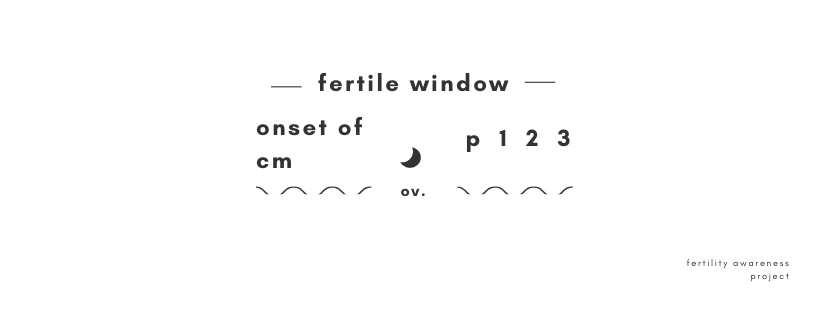How Effective is Fertility Awareness?
Let’s talk effectiveness and FAM.
One of the biggest considerations for choosing a method of contraceptive is effectiveness. And this makes sense! We want to assess the reliability of whatever method we choose to do the job it’s meant to do: prevent pregnancy.
Most methods of birth control are assessed for their reliability and effectiveness and this is shown in a typical- and perfect-use failure rate. The percentages shown for typical use failure rates include the margin of user error - for example, if someone forgets to take their pill at the same time each day, or uses a condom incorrectly. This means that methods with a larger margin between perfect and typical use rates are easier for the user to mess up. Typical use rates are calculated for the effectiveness over the population of a group of people, for one year of use.
The effectiveness rates for fertility awareness are available, but the trials have been critiqued for not being as sound as the trials for other methods of birth control. When we think about where money for research comes from, and where the motivation to study drugs and devices that prevent conception (pharmaceutical companies) this makes sense. There is really very little money in fertility awareness based methods compared to bigger methods of birth control.
So, how effective are FABMS?
In one review published in 2018, studies of fertility awareness based methods were assessed for how sound the data was, and ranked them in high, medium and low quality categories. The review found that most were of low quality. In the moderate-quality category, the study done on the Sensiplan Symptothermal (both CM and basal body temperature calculations) reported a 99.6% perfect use effectiveness rate. Because typical use rates are calculated using population-based surveys from a large pool of people, and studies on FABMS lack such a big population pool, there are no accurate typical use calculations for FABMS. As Jessie Brebner of Fertility Charting notes, some typical use rates for FABMS lump all methods of FABMS together to gain a typical use rate. The only problem is, this includes people who report using the calendar method, which isn’t really a method of FAM at all - more a blind guess as to where someone is in their fertile window.
Recently, the CDC changed its effectiveness rates for fertility awareness based methods to reflect a more accurate measure of effectiveness. It was previously listed as a 24% failure rate and was changed to 2%-23%
In a group of 26,000 Facebook members, one member has reported unintended pregnancy or “FAM failure” not due to user error. This is not a replacement for a clinical trial, of course, but it does tell you something about the effectiveness of FAM. This is not to mention that not everyone who experienced a failure in that group would report it in the group. What we really need is stronger, larger population, longitudinal studies done for more accurate effectiveness rates for FAM.
With FAM, effectiveness is in your hands.
And after ovulation, when the egg is dead and gone, there is no possibility of conception. There is just no possible way that conception can happen when there is no egg present to be fertilized.
This also means that if you have a FAM failure, as in a situation that would result in FAM effectiveness being decreased or possibly failing to prevent pregnancy, you would know. When charting your cycles, you know exactly what the possibility of pregnancy is in your cycle. Either you are relatively infertile, before ovulation when ovulation may occur, you are at high fertility when ovulation is about to or has happened, or you are definitely infertile, when ovulation has already occurred.
FAM works by helping you identify your fertile window, the time in your cycle when conception can happen. This factors in the 5 days that sperm can stay alive in cervical mucus, as well as the 12-24 hours that the egg survives. We can’t ever know ahead of time when ovulation, or the release of an egg, will occur. But we can confirm after the fact with basal body temperature and cervical mucus. Prior to ovulation, a calculation rule such as the Doering rule in the symptothermal method of fertility awareness helps us identify when the fertile window opens, based on past data from our own cycles. Once an egg is released, progesterone present in the body creates an effect that warms your body, which we can detect with a basal body thermometer. We can also measure peak day, which is the last day of peak type, fertile mucus. Studies have shown that ovulation happens within three days before or after peak day. These two calculations help us confirm ovulation.
Like I mentioned with FAM, effectiveness is up to you. The more you stick to the method, stay on the same page with your partner, and avoid taking risks, the higher the effectiveness rates are. Generally, if you are in doubt, consider yourself fertile.
You can increase effectiveness by:
Working with an instructor. This helps ensure that you are using your chosen method of FAM correctly, and you are following all the rules for avoiding pregnancy with your method.
Waiting three cycles to rely on the method for birth control.
Ensuring you maximize effectiveness of whatever you use during the fertile window, whether it is withdrawal, condoms, diaphragm or alternative sex. If your method during the fertile window fails, you will know that you have a higher chance of pregnancy occurring. To increase effectiveness, some people will “double up” on their method during the fertile window. For example, combining withdrawal with condoms.
Have your partner understand FAM and ensure you are both on the same page with FAM and where you are in your cycle (not a bad side benefit of FAM!)
The conversation around FAM and effectiveness is not a simple one. It requires a discussion around your level of comfort with the method, whether you are on the same page with your partner, and how often you take risks. If you are someone who really doesn’t want to get pregnant, you won’t take the same risks as someone who is TTW (or trying to whatever). This means that you will have a higher effectiveness if you are strictly trying to avoid than if you’re more in the middle of the road with your intentions. If you have been thinking about using FAM for birth control, have tried learning yourself and are still feeling unsure if you can trust the method for birth control, I highly recommend you consider working with an instructor, or check out when I’m running the next round of my online FAM course.



